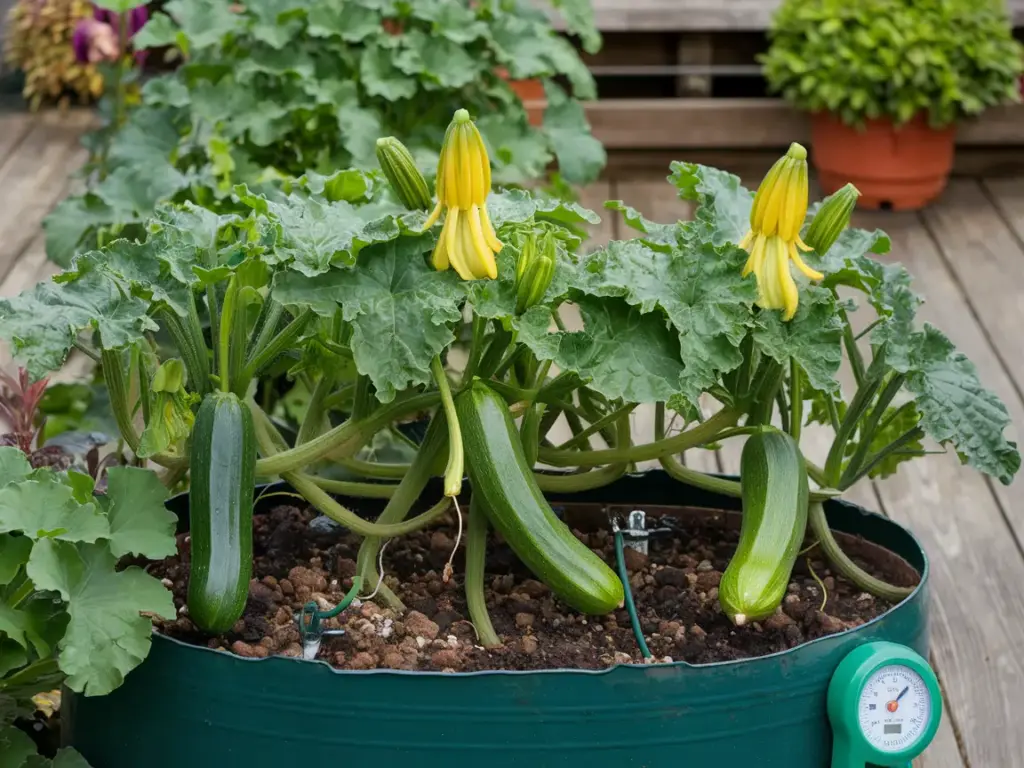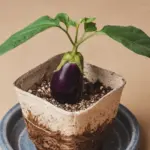Secret #4: Professional Watering & Care Methods

Let me tell you about my biggest container gardening mistake ever. I killed three zucchini plants before I finally figured out the perfect watering system. Now? I haven’t lost a plant in five seasons, and I’m excited to share exactly what I learned!
The Game-Changing Moisture Meter Method
You know what’s been a total game-changer for me? A simple $10 moisture meter. Don’t trust your fingers to tell you when to water – they lie! I learned this the hard way after overwatering my first batch of container zucchini. Now, I simply stick the meter into the soil, and it tells me exactly what’s going on beneath the surface.
The trick is to water only when the meter reads “4” or below on a scale of 1-10. Container zucchini needs consistent moisture but absolutely hates soggy feet. I keep my meter right next to my plants as a reminder to check daily.
Morning vs. Evening Watering: The Final Verdict
After years of experimenting, I can definitively say that morning watering wins hands down. Here’s why: watering early (between 6-8 AM) gives your zucchini plants time to absorb what they need before the hot sun hits. Evening watering might seem logical, but it can lead to fungal issues overnight.
One exception to this rule: during heatwaves above 90°F (32°C), I’ll give my plants a light sprinkle in the evening too, being careful to only wet the soil, not the leaves.
Reading Your Plant’s Distress Signals
Your zucchini plant is actually pretty chatty – if you know what to look for! When leaves droop during midday but perk up by evening, that’s normal. But if you see:
- Yellowing lower leaves: Usually means overwatering
- Crispy leaf edges: Underwatering or heat stress
- Wilting despite moist soil: Root problems
- Leaves curling inward: Time to check for pests
The Pruning Protocol for Maximum Yields
Here’s something most guides won’t tell you: pruning container zucchini is crucial for bigger harvests. I remove any leaves showing signs of disease immediately, and trim off the oldest leaves once the plant has 8-10 healthy ones. This improves air circulation and directs energy to fruit production.
Support Systems That Actually Work
After watching my first zucchini plant flop over and break, I developed a simple support system. I use a tomato cage modified into a circular support, but here’s the trick: place it when planting, not after. The plant will grow into it naturally, and you’ll avoid stem damage.
Ready to learn about dealing with pesky garden invaders and disease prevention? Click the next button below to discover my tried-and-true pest prevention secrets – including the fascinating pollination trick that doubled my harvest last season! Trust me, you won’t want to miss these game-changing tips that’ll keep your zucchini thriving all season long.









GIPHY App Key not set. Please check settings